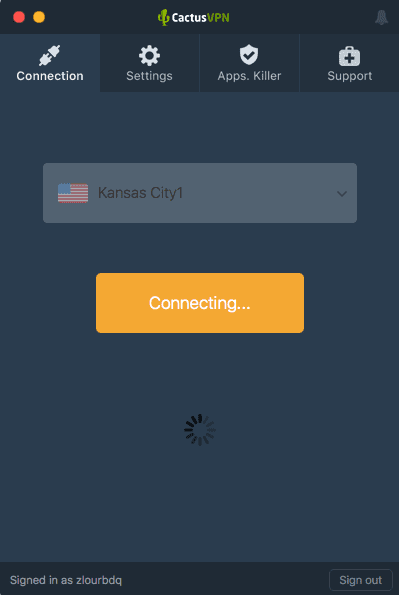- Cactus Attack Mac Os Download
- Cactus Attack Mac Os 11
- Cactus Attack Mac Os X
- Cactus Attack Mac Os Catalina
A phishing scam has targeted Mac users by redirecting them from legitimate websites to fake websites which tell them that their computer is infected with a virus. The user is then offered Mac Defender 'anti-virus' software to solve the issue.
This “anti-virus” software is malware (i.e. malicious software). Its ultimate goal is to get the user's credit card information which may be used for fraudulent purposes.
The most common names for this malware are MacDefender, MacProtector and MacSecurity.
Apple released a free software update (Security Update 2011-003) that will automatically find and remove Mac Defender malware and its known variants.
The Resolution section below also provides step-by-step instructions on how to avoid or manually remove this malware.
Resolution
- Aware of the problem, Apple eventually replaced the classic Mac operating system with the new Mac OS X, which came with built-in malware security measures. For instance: Quarantine, introduced in 2007, alerts users if they try to open applications downloaded from the Internet. It acts as a reminder, in effect prompting users to think twice.
- The Einstein Toolkit compiles and runs great on Mac OS X. A critical component of this toolkit is the Cactus Computing Toolkit (see below). Source: click here! Documentation: click here! CactusCode (Numerical Computing Toolkit): Cactus is an open source problem solving environment designed for scientists and engineers.
Assault Android Cactus is an intense arcade style twin stick shooter - pick from one of nine unique synthetic heroines and blast your way through overwhelming robots hordes to save the ship from its own workforce. Supports single player and local co-op game modes. ImageMagick installer for Mac OS X The installer puts ImageMagick into /opt/ImageMagick and adds it to your PATH by creating an entry in /etc/paths.d/. These ImageMagick installers include the following delegates: bzlib fftw jng jpeg lcms lzma png ps tiff xml zlib, and now includes support for webp. Like many Mac-targeted attacks, it depends on 'social engineering' or user error: you click a link in an email, and the malware is smuggled on to your Mac. This then triggers the attack.
How to avoid installing this malware
Cactus Attack Mac Os Download
If any notifications about viruses or security software appear, quit Safari or any other browser that you are using. If a normal attempt at quitting the browser doesn’t work, then Force Quit the browser.
In some cases, your browser may automatically download and launch the installer for this malicious software. If this happens, cancel the installation process; do not enter your administrator password. Delete the installer immediately using the steps below.

- Go into the Downloads folder, or your preferred download location.
- Drag the installer to the Trash.
- Empty the Trash.
How to remove this malware
If the malware has been installed, we recommend the following actions:
- Do not provide your credit card information under any circumstances.
- Use the Removal Steps below.
Removal steps
- Move or close the Scan Window.
- Go to the Utilities folder in the Applications folder and launch Activity Monitor.
- Choose All Processes from the pop up menu in the upper right corner of the window.
- Under the Process Name column, look for the name of the app and click to select it; common app names include: MacDefender, MacSecurity or MacProtector.
- Click the Quit Process button in the upper left corner of the window and select Quit.
- Quit Activity Monitor application.
- Open the Applications folder.
- Locate the app ex. MacDefender, MacSecurity, MacProtector or other name.
- Drag to Trash, and empty Trash.
Cactus Attack Mac Os 11
Malware also installs a login item in your account in System Preferences. Removal of the login item is not necessary, but you can remove it by following the steps below.
- Open System Preferences, select Accounts, then Login Items
- Select the name of the app you removed in the steps above ex. MacDefender, MacSecurity, MacProtector
- Click the minus button
Use the steps in the “How to avoid installing this malware” section above to remove the installer from the download location.
Cactus Attack Mac Os X
Note: Apple provides security updates for the Mac exclusively through Software Update and the Apple Support Downloads site. User should exercise caution any time they are asked to enter sensitive personal information online.
Cactus Attack Mac Os Catalina
Google uses cookies and data to:- Deliver and maintain services, like tracking outages and protecting against spam, fraud, and abuse
- Measure audience engagement and site statistics to understand how our services are used

- Improve the quality of our services and develop new ones
- Deliver and measure the effectiveness of ads
- Show personalized content, depending on your settings
- Show personalized or generic ads, depending on your settings, on Google and across the web
Click “Customize” to review options, including controls to reject the use of cookies for personalization and information about browser-level controls to reject some or all cookies for other uses. You can also visit g.co/privacytools anytime.